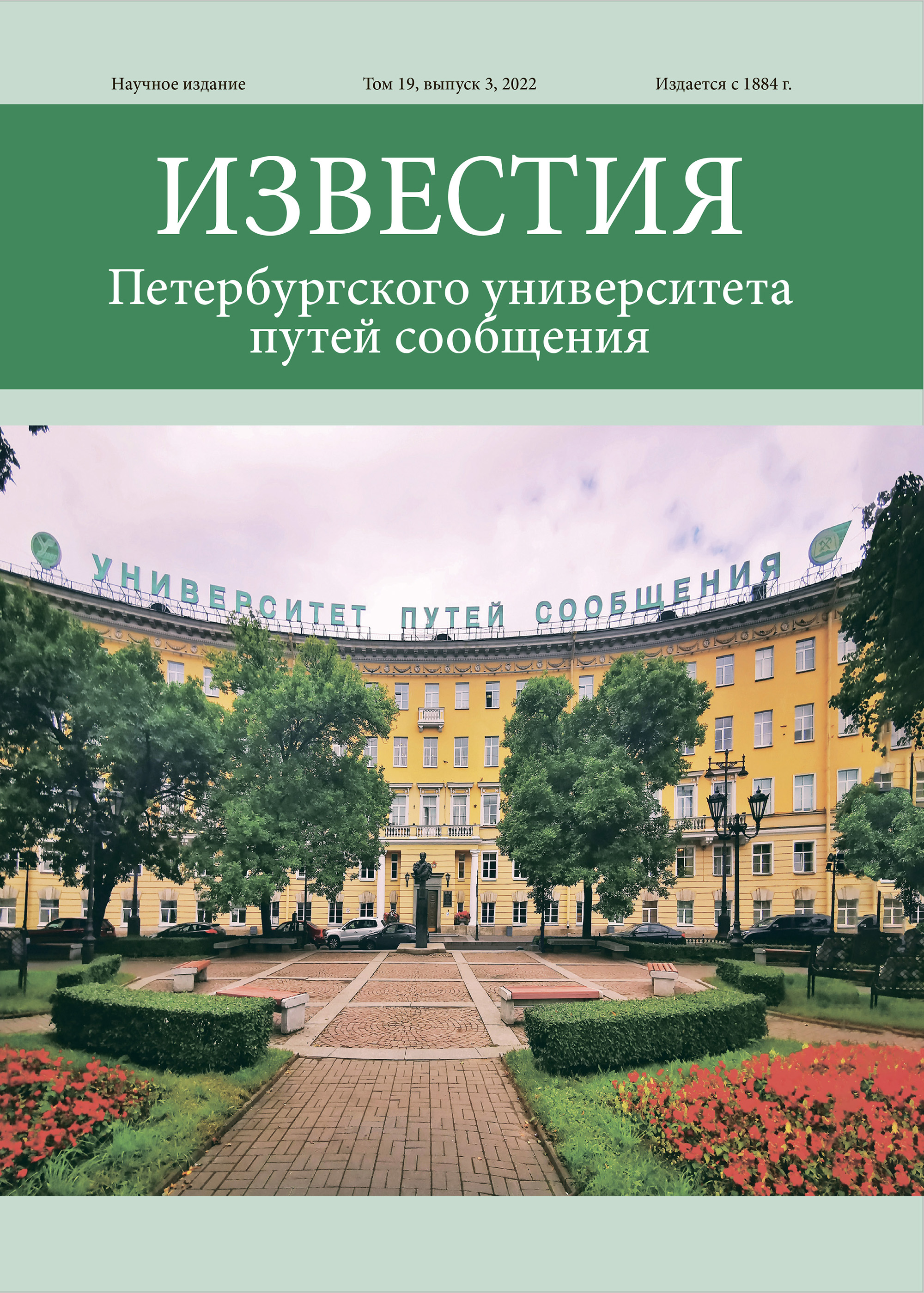Russian Federation
Russian Federation
Purpose: To consider the issue on performance of operational control of deformations of tunnel bottomhole zone with the use of ground-based laser scanning technology when tunneling with New Austrian tunneling method which is the most progressive one and feasible in economics terms for underground building construction by mining. The essence of this method is in that as a support for tunnel bottom-hole zone, a self-supporting shell made of sprayed concrete without traditional fastening method usage is applied that allows to save time for tunneling significantly, especially of those tunnels which have complex geometry and non-standard dimensions. At the same, the conceptual basis for this method is the necessity to identify operatively bottomhole zone soil mass deformations that’s justified by the need to provide job realization safety. Methods: As a major method for to determine tunnel bottomhole zone geospatial position it is proposed to consider ground-based laser scanning technology. Scanning result processing was implemented in specialized software package Leica Cyclone 3DR. Results: Existing experience of geodetic check of deformations in tunneling by New Austrian method is considered. Processing results for data on ground laser scanning of a tunnel separate fragment are presented, a tunnel mathematical three-dimensional model is obtained and assessment of deviations of tunnel actual surface from obtained theoretical one is fulfilled. Practical significance: The obtained threedimensional model can be further used for geodetic monitoring of deformations. Theoretical bases for estimation required accuracy for deformation characteristics definition are substantiated which are based on the transition from construction tolerances to average quadratic errors of deformation characteristics definition and then to average quadratic errors of coordinates for laser scanning points. The enlarged stages of scanning are defined with view of tunneling technology of New Austrian method.
New Austrian tunneling method, geodesic deformation check, tunnel bottomhole zone, groundbased laser scanning, three-dimensional model
1. URL: https://www.academia.edu/9427931/B_Year_Innovation_Project_Illustration.
2. Karakus M. FEM analysis for the effects of the natm construction technique on settlement above shallow soft ground tunnels / M. Karakus, R. J. Fowell. - https://www.researchgate.net/publication/258113737_FEM_analysis_for_the_effects_of_the_NATM_construction_technique_on_settlement_above_shallow_soft_ground_tunnels.
3. Karakus M. An insight into the New Austrian Tunnelling Method (NATM) / M. Karakus, R. J. Fowell // The 7th Regional Rock Mechanics Symposium, Sivas. - Vol.: Sivas, Turkey.
4. Chapman D. N. Introduction to tunnel construction / D. N. Chapman, N. Metje, A. Stärk. - DOIhttps://doi.org/10.1201/9781315273495.
5. URL: https://cecl.global/project/tunnelbeamer/.
6. URL: http://dspace.nbuv.gov.ua/bitstream/handle/123456789/33268/21-Kozerema.pdf?sequence=1.
7. URL: https://www.ita-aites.cz/files/tunel/2005/4/tunel-0504-4.pdf.
8. Trigger Values for tunnel monitoring in SCL shallow tunnels. URL: https://diglib.tugraz.at/download.php?id=58e2cacdc3ec7&location=browse.
9. The Laser-Distometer: a newer, better way to measure tunnel deformations. URL: https://cgs.ca/pdf/GeoTechNews/2014/GIN%203201.pdf.
10. Hilar M. Evaluation of innovative sprayed-concrete-lined tunneling / M. Hilar, A. Thomas, Y. S. Hsu, B. Jones // ICE Proceedings Geotechnical Engineering. - № 161(3). - Pp. 137-149. - DOI:https://doi.org/10.1680/geng.2008.161.3.137.
11. NATM / SEM From Design to Construction. - URL: https://tunnelingshortcourse.com/2016-presentations/gall-natm-design-construction.pdf.
12. Health and safety, and risk management in tunneling. - URL: http://faculty.tafreshu.ac.ir/file/download/course/1583686541-introduction-to-tunnel-construction-part-3-of-3.pdf.
13. Kanashin N. V. Application of laser scanning technology in geotechnical works on reconstruction of draw spans of the Palace Bridge in Saint Petersburg / N. V. Kanashin, A. A. Nikitchin, E. S. Svintsov // Procedia Engineering. - 2017. № 189. - Pp. 393-397. - DOIhttps://doi.org/10.1016/j.proeng.2017.05.062.
14. Bogomolova N. Laser scanning application possibilities in the engineering structures survey / N. Bogomolova, A. Nikitchin // IOP Conference Series: Materials Science and Engineering. - 2019. - № 698(4). - DOI:https://doi.org/10.1088/1757-899X/698/4/044011.
15. Romanovich M. Using the laser scanning method in the reconstruction of metro stations / M. Romanovich, M. Kuzmenkova, V. Breskich, K. Kulakov // Transportation Research Procedia. - 2021. - № 54. Pp. 819-826. - DOI:https://doi.org/10.1016/j.trpro.2021.02.135.
16. Nuttens T. Ovalisation measurements of newly built concrete tunnels by means of terrestrial laser scanning / T. Nuttens, A. De Wulf, C. Stal et al. // Conference Paper. June 2011. - DOI:https://doi.org/10.5593/sgem2011/s07.112.
17. Nuttens T. High Resolution Terrestrial Laser Scanning for Tunnel Deformation Measurements / T. Nuttens, A. De Wulf, L. Bral // Conference: FIG Congress 2010 - Facing the Challenges-Building the Capacity. Sydney, Australia.
18. Gikas V. Three-Dimensional Laser Scanning for Geometry Documentation and Construction Management of Highway Tunnels during Excavation / V. Gikas // Sensors. - 2012. - № 12. - Pp. 11249-11270. - DOIhttps://doi.org/10.3390/s120811249.
19. Arastounia M. Automated As-Built Model Generation of Subway Tunnels from Mobile LiDAR Data / M. Arastounia // Sensors. - № 16(9). P. 1486. - DOI:https://doi.org/10.3390/s16091486.









